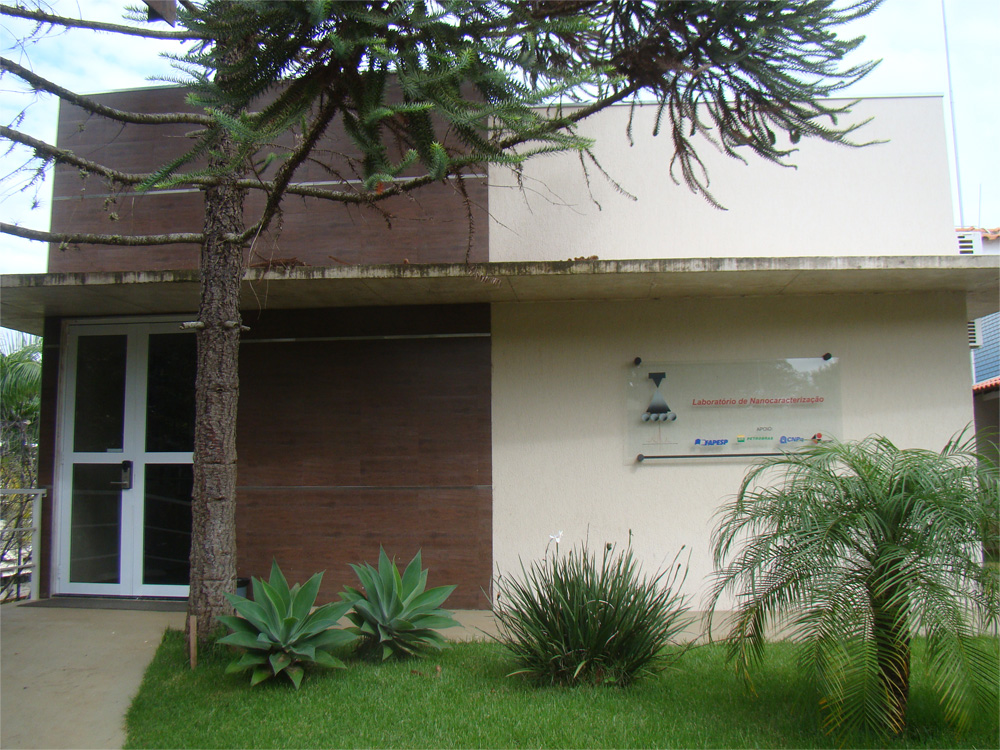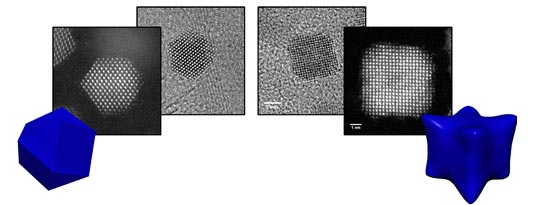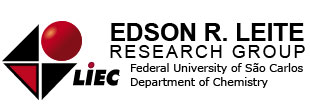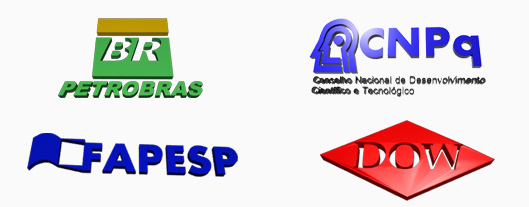Welcome to Prof.
Edson R. Leite
Website
from Chemistry Department at Federal University of Sao Carlos (UFSCar) in Sao Carlos, SP, Brazil. Our laboratory use the "bottom-up" approach for the development of nanostructured materials
 and nanotechnology. Based on a highly interdisciplinary research
program, we are developing synthetic routes to design nanoscale building blocks
(mainly transition metal oxides nanocrystals) and methods for hierarchical
organization of building blocks into increasingly complex integrated assemblies.
We use the bottom-up approach to explore
new science and applications in diverse areas, including nanoelectronics, nanocomposites and catalyses.
and nanotechnology. Based on a highly interdisciplinary research
program, we are developing synthetic routes to design nanoscale building blocks
(mainly transition metal oxides nanocrystals) and methods for hierarchical
organization of building blocks into increasingly complex integrated assemblies.
We use the bottom-up approach to explore
new science and applications in diverse areas, including nanoelectronics, nanocomposites and catalyses.
Highlights
HIGH RESOLUTION ELECTRON MICROSCOPY STUDY OF NANOCUBES AND POLYHEDRAL NANOCRYSTALS OF CERIUM(IV) OXIDE.

Authors: Cordeiro, M. A. L.; Weng, W. H.; Stroppa, D. G.; Kiely, C. J.; Leite, E. R.,
Source: Chemistry of Materials 2013, 25, (10), 2028-2034
Abstract: In this research, high resolution transmission electron microscopy (HRTEM) and high angle annular dark field–scanning transmission electron microscopy (HAADF-STEM) studies of ceria(IV) oxide CeO2 nanocrystals (NCs) synthesized by a hydrothermal/two phase process were conducted. The synthesis route affords the possibility of controlling the shape of the CeO2 NCs by changing the oleic acid/cerium ([OLA]/[Ce3+]) ratio. At a relatively low [OLA]/[Ce3+] ratio of 4, a polyhedral NC morphology was obtained with {111} and {200} termination facets. Increasing the [OLA]/[Ce3+] ratio to 8, while maintaining a constant reaction time and temperature during the synthesis, truncated cube-like CeO2 NCs with {200}, {220}, and {111} termination facets was generated. These morphologies were identified by HRTEM and HAADF-STEM characterization. Fourier transform infrared (FT-IR) analysis and thermogravimetric analysis (TGA) confirm the presence of chemically bonded oleic acid (OLA) on the CeO2 NC surface. It indicates that there is a relationship between the bonded OLA and the shape of the NC. Additionally, the identification of concave surfaces on {200} facets by HAADF-STEM characterization suggests that the formation of the cube-like CeO2 morphology is a multiple step mechanism. On the basis of these observations new growth mechanisms for the CeO2 morphology variants are proposed.
Service
Edson R. Leite Research Group disponibiliza serviços de microscopia eletrônica para empresas interessadas. Entre seus serviços então a Microscopia Eletrônica de Varredura (MEV), Microscopia de Força Atômica (AFM) e Microscopia Eletrônica de Transmissão (MET). read more
Price Table Term Science Standards of Operation Sample Formnews
PtSnNi/C nanoparticle electrocatalysts for the ethanol oxidation reaction: Ni stability study.
Parreira, L. S. /; da Silva, J. C. M. / D'Villa -Silva, M. / Simões, F. C. / Garcia, S. / Gaubeur, I. / Cordeiro, M. A. L. / Leite, E. R. / dos Santos, M. C.
This work describes the use of Pt3Sn/C, Pt3Ni/C and Pt3SnNi/C nanoparticle electrocatalysts with a 20% metal loading on carbon prepared using the polymeric precursor method for the ethanol oxidation reaction (EOR). XRD measurements revealed the presence of segregated Pt and NiO phases in the Pt3Ni/C electrocatalysts... continue reading
COMPARISON OF THE NANOPARTICLES PERFORMANCE IN THE PHOTOCATALYTIC DEGRADATION OF A STYRENEBUTADIENE RUBBER NANOCOMPOSITE
Arantes, T. M. / Sala, R. L. / Leite, E. R. / Longo, E. / Camargo, E. R.
Much has been talking about the advantages of polymeric nanocomposites, but little is known about the influence of nanoparticles on the stability of these materials. In this sense, we studied the influence of both oxides of zirconium and titanium, known to have photocatalytic properties, as well as the influence of synthetic clay Laponite on the photodegradation of styrene–butadiene rubber (SBR)... continue reading



